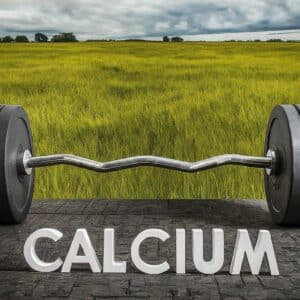
If you ask children why they need calcium, they automatically answer that it’s good for your bones.
But what would growers say? We all know plants need calcium – but how and why? Let’s look at all the reasons calcium plays an important role in crop development.
Building strong walls: Imagine calcium as the tiny bricks that make up plant cell walls. These walls provide structure and support, allowing plants to stand tall and resist wind, rain, and even their own weight. Stronger cell walls also help plants with disease, preventing it from spreading through the plant.
Stress resilience: Calcium acts like a stress reliever for plants. It helps them cope with environmental challenges like drought, extreme temperatures, and insect attacks. By stabilizing cell membranes and regulating internal processes, calcium keeps plants functioning even when conditions are tough.
Nutrient uptake: Calcium helps balance the soil and in a well-balanced soil, you have a neutral pH. A neutral soil pH is ideal for plants to absorb other essential nutrients.
Deficiency
A calcium deficiency will start by affecting the growing points of the plant resulting in new growth that looks stunted or withered. Tip burn is also common. Because of the role calcium plays in fruit development, a deficiency will appear as the premature shedding of blossoms and buds as well as water-soaked and discolored areas on fruits.
The role of lime
The primary source of calcium for crops is lime. Lime application serves a dual purpose:
Adjusting soil pH: Lime helps achieve a neutral pH range, which needed for the best nutrient uptake.
Balancing soil chemistry: By increasing the base saturation percentage, lime makes calcium sufficiently availability for crops.
“Ideally, we want to see that percent base saturation between 65 and 75 percent,” said AgroLiquid agronomist Stephanie Zelinko.
While lime covers the foundational needs, liquid calcium sources provide a targeted approach to nourish growing crops. These can be applied during planting or through foliar feeding.
Compatible?
However, a challenge with liquid calcium is its reactivity.
“The downside to having liquid sources of calcium is they are highly reactive, and they will often cause compatibility issues when mixing with other nutrients such as phosphorous,” said Stephanie.
This means growers have to make more trips across the field, using more fuel, causing more fuel compaction, and taking more time.
At AgroLiquid, we understand the challenges associated with traditional calcium sources. That’s why we developed LiberateCa. It offers a significant advantage: it’s compatible with other nutrients, so you don’t need multiple applications.
We can even demonstrate it in a simple lab experiment.
For instance, if you add Pro-Germinator, a phosphorus product, to two different beakers to mix with solutions, you can see what happens with the unprotected calcium.
“There is slight fallout in this solution, which means that this is not compatible,” said AgroLiquid product development chemist Maria Espinosa.
However, when it’s mixed with LiberateCa, you get different results.
“The result of the reaction – we see this is a clear solution. No fall out,” she said.
Certain crops, like soybeans, potatoes, tomatoes, and apples, have a higher calcium demand for optimal yield and quality. A soil test combined with an understanding of your specific crop needs will guide you toward the most effective calcium application strategy.
Calcium isn’t just for your bones…it’s for the backbone of your nutrient plan.
See the research on soybeans, apples and pears, and corn.
For more on calcium’s role in crop health and to explore the benefits of LiberateCa, contact your local AgroLiquid representative.
Check it out: In this Agronomic Advisor Focus, Agronomist Stephanie Zelinko and Product Development Chemist Maria Espinosa explain why calcium is good for your crops – and watch the experiment for yourself!

